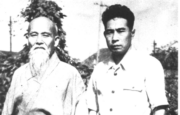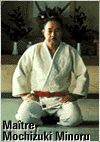NEWS
May 22nd, 2005 ? Belt grading for several students. All those who took the test passed this time. Congratulations to all. Check out the photos on the "Our Class" page.
July 1st ? Reminder: Aikibudo classes do not run through the summer as many students go away on vacation. However, some students will be training through the summer. E-mail the webmaster if you have any questions about what happens in the summer.
September 3rd, 2005 ? Regular classes resume at the club. Prospective students are indeed welcome to stop by and visit anytime.
November 27th, 2005 ? New Kenjutsu (Art of the Sword) Class! Sundays from 1:00pm to 2:00pm. Sensei Phan can get you a bokken (wooden practice sword) if you don't have one. All regular members welcome at no extra cost.
December 10th, 2005 ? There was belt grading for several students, and it was a tremendous success, as all students passed. Congratulations to all, especially to our newest black belt, Phi. Also to new second-degree black belts Karen and Jenny. Stay tuned for a full photo page of the new promotions.
CONDUCT of the CLASS
Our classes are two hours long. The first portion consists of a warm-up and stretching. Second, we practise foundation movements. This includes ?tenkan? (turning to avoid an attack), punches and kicks, and breakfalls. It is important for us to practise various punches, kicks and strikes for two reasons: one, in case we should need such techniques in a self-defence situation, and two, so that we may execute these attacks realistically and skilfully on our partners, who will then defend against them using the techniques of Aikibudo. Breakfalling is a crucial element as well, because many Aikibudo techniques result in throwing the opponent. Therefore, we vigorously practise front, side, and back breakfalls, with more advanced versions for more advanced students. Overall, Aikibudo Ontario is a friendly club. We do train seriously, but safety is our first priority.
The TECHNIQUES of AIKIBUDO
The techniques of Aikibudo themselves are dependent on the concept of ?Aiki?, which means to unbalance your opponent and redirect his own inertia and effort so that he is thrown away, often landing on the ground. As a result of the focus on ?Aiki?, this using of your opponent?s force against him, Aikibudo is an excellent martial art for smaller people who are unable, or prefer not, to rely on strength in self-defence. This is one reason why our club has a healthy balance of male and female students, younger and older. Typically, our techniques are reactions are against wrist grabs, clothing grabs, as well as strikes, punches and kicks. Much of these techniques are wrist locks, elbow locks, and shoulder locks that make up a large element of the techniques in Aikido and Jujutsu. Aikibudo also includes classic Judo-style techniques (major body throws) and sutemi-waza (sacrifice throws), as well as leg takedowns at higher levels. We practise the various individual techniques with partners against simulated attacks, and also practise ?randori?, an exercise for more experienced students. The student stands in the middle of a large circle of students. One at a time, students from the circle attack the one in the center. The student in the center just defends him or herself until each student in the circle has attacked. It?s a lot of fun, and a great exercise to practise using Aikibudo in self-defence situations.
JOINING the CLUB
We?re a not-for-profit club, so we want you to be sure that Aikibudo is for you. We welcome anyone to come watch the class and see whether it interests you. Prospective students are welcome and indeed encouraged to try the class out for a week or two before paying any fees and signing up. If you decide to join up, you?ll fill out your information form and pay your first month?s fees ($45). Sensei Tam can get you your uniform at a lower price than you?ll pay yourself. You don?t have to buy your uniform from the teacher; you?re welcome to shop around yourself, but ask us first what kind of uniform you need and be sure you won?t get the wrong one. But if you?re not sure, the teacher can get you what you need probably cheaper than you can find it yourself.
HISTORY of AIKIBUDO
Master MOCHIZUKI Minoru previously studied Judo with Master KANO, the founder of Judo, before starting his training with Master UESHIBA, the founder of Aikido, in 1930. The form of martial art that Master Ueshiba taught in the very early years was very close to the style of Aiki Jujutsu Daitoryu. This form is often referred to as Aikibudo and it is considered to be one of the harder forms of Aikido. Many of the early disciples of Master Ueshiba?s practiced this form of hard Aikido, including Master Mochizuki. Besides mastering Judo and Aikibudo, Master Mochizuki was also known for his techniques in Karate and the art of swordfight Katori Shinto Ryu.
In 1951, Master Mochizuki brought Aikibudo to Europe under the name of Aikido-Jujutsu. Three years later, Master Mochizuki returned to Japan and formed Yoseikan Aikido. Among the first Yoseikan Aikido trainees was Master Jim ALCHEIK. One of the students of Master Alcheik's, Master Alain FLOQUET, had the honor of being trained also by Master Minoru Mochizuki himself and Master Hiroo Mochizuki ? the son of Master Minoru Mochizuki?s. In 1982, Master Floquet adopted the name Aikibudo for his school, with Master Minoru Mochizuki?s full consent. Today, Master Floquet continues to teach and expands this martial art by integrating Aiki Jujutsu Daitoryu and Katori Shinto Ryu into his teaching.
In 1960, Sensei Kazuo ISHIKAWA and Harie WATANABE arrived to Sai Gon, Vietnam to open an Aikibudo dojo, at the invitation of the Cercle Sportif Saigonnaise. During this period, the dojo was of the name Yoseikan Aikido. Sensei NGUYEN Dang Duc was among the first disciples at the Yoseikan Akido Dojo in Vietnam. Sensei Nguyen was subsequently awarded the 5th dan and named the head of the Yoseikan Aikido - Vietnam, by both Sensei Ishikawa and Watanabe. In 1986, Sensei Nguyen arrived to the United States of America to be united with his family. He subsequently passed away in 1987. Sensei PHAN Huynh Tam, a 3rd dan Aikibudoka, was a disciple of Sensei Nguyen's. Sensei Huynh started training in 1985 and arrived to Canada in 1993. The Canadian Aikibudo Dojo was started in 1997.

Master Kano

Master Ueshiba and
Master Mochizuki
